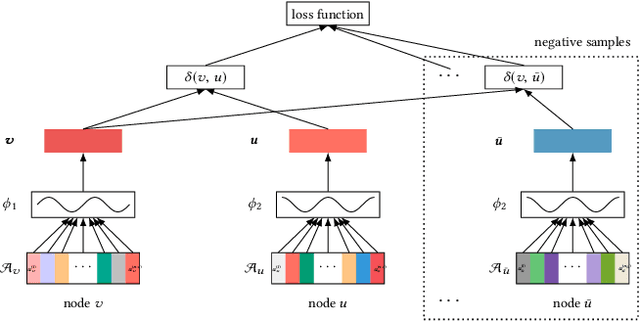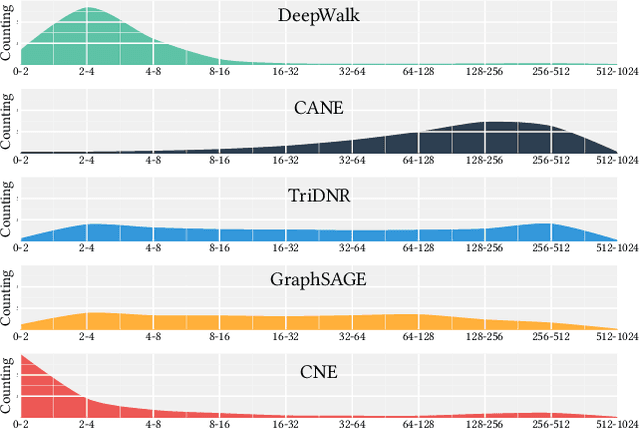Compositional Network Embedding
Paper and Code
Apr 18, 2019



Network embedding has proved extremely useful in a variety of network analysis tasks such as node classification, link prediction, and network visualization. Almost all the existing network embedding methods learn to map the node IDs to their corresponding node embeddings. This design principle, however, hinders the existing methods from being applied in real cases. Node ID is not generalizable and, thus, the existing methods have to pay great effort in cold-start problem. The heterogeneous network usually requires extra work to encode node types, as node type is not able to be identified by node ID. Node ID carries rare information, resulting in the criticism that the existing methods are not robust to noise. To address this issue, we introduce Compositional Network Embedding, a general inductive network representation learning framework that generates node embeddings by combining node features based on the principle of compositionally. Instead of directly optimizing an embedding lookup based on arbitrary node IDs, we learn a composition function that infers node embeddings by combining the corresponding node attribute embeddings through a graph-based loss. For evaluation, we conduct the experiments on link prediction under four different settings. The results verified the effectiveness and generalization ability of compositional network embeddings, especially on unseen nodes.
 Add to Chrome
Add to Chrome Add to Firefox
Add to Firefox Add to Edge
Add to Edge